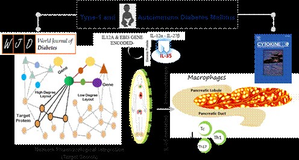New Delhi, Nov 5 (IANS) Scientists at the Institute of Advanced Study in Science and Technology (IASST) in Guwahati, an autonomous institute under the Department of Science and Technology, have discovered a specific protein IL-35 that can aid in new treatments for type I and autoimmune diabetes mellitus.
IL-35 is a specific protein of IL-12 alpha and IL-27 beta chains which is encoded by the IL12A and EBI3 genes.
The IASST team showed that IL-35 protects the immune system by lowering particular immune cells that produce inflammatory chemicals. This can help reduce pancreatic cell infiltration — a key contributor to type 1 diabetes and autoimmune diabetes mellitus.
“This protein presents a novel diabetes treatment option,” said the scientists, even as the global diabetes epidemic is growing.
Diabetes disproportionately affects developing country children and adolescents calls for effective treatment for the disease.
In the study, the team led by Dr. Asis Bala, Associate Professor, conducted a network pharmacological analysis of IL-35-related genes, gene-disease associations, and a comprehensive experiment review.
Using the network pharmacological analysis, they identified five disease-interacting genes associated with immune-inflammatory, autoimmune, neoplastic, and endocrine disorders.
The findings, published in the journals CYTOKINE and World Journal of Diabetes, showed that IL-35 can protect against type 1 and autoimmune diabetes.
“It regulates macrophage activation, T-cell proteins, and regulatory B cells,” the team said. They explained that IL-35 stops pancreatic beta cells from attacking immune cells.
Further, the protein also lowers particular immune cells that produce inflammatory chemicals, reducing pancreatic cell infiltration — a key contributor in type 1 diabetes and autoimmune diabetes mellitus.
The study implies that “IL-35 protects the immune system, presenting a novel diabetes treatment option,” said the researchers, while calling for more studies to understand the mechanisms and advance IL-35-based therapeutics into clinical trials.
–IANS
rvt/





























